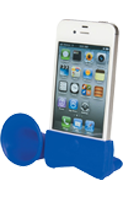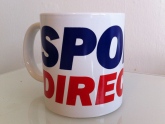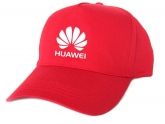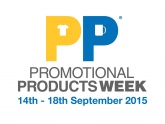
5 Steps to the Perfect Loyalty Program with Corporate Gifts
According to the Pareto principle 80% of a business's sales come from just 20% of customers. This means you should be finding ways to ensure that the small group of customers who are responsible for the greatest percentage of your revenue are being actively engaged and rewarded for their custom, so that they remain loyal. One way to make your clients feel appreciated is through a loyalty program.
Not only do loyalty programs reward existing loyal customers, but they also serve another purpose, which is to attract new customers. Running an appealing loyalty program can encourage one-off customers to come back, and win over prospective customers by distinguishing you from your competitors and demonstrating that you are a generous, fair-minded brand.
Loyalty programs that use corporate gifts are particularly effective as they appeal to people's love of getting stuff for free! Corporate gifts doesn't just mean branded pens and keyrings - there is a whole array of corporate gifts that can suit any business and which can be used to help clients get the most out of their purchases. Read on to learn the 5 steps to a successful loyalty program with corporate gifts:
1. Research your Customer Base
In order to take advantage of the 80/20 principle, you need to know who your twenty percent are. Keep track of the frequency with which customers use your services, and how much they spend each time. You can then establish who your most valuable customers are. Once you’ve found this out you can get to work finding out exactly what those loyal customers value about your products or service, and how they think you could improve. By finding out this information, you will be better able to tailor your loyalty scheme to their needs and tastes.
 Surveys and data collection will help you tailor your loyalty program to your customers' needs
Surveys and data collection will help you tailor your loyalty program to your customers' needs
There are various ways of gathering information about your customers. You can obtain data through online order forms - just add an optional section requesting more information, with an instruction such as: "Please answer these questions to help us improve our service", or you could send out a survey to customers via email. Alternatively, talking to customers directly is one of the most effective ways to learn their tastes and needs. This way you can ask specific questions about the kind of gift they would like, and tailor your scheme based on their preferences.
2. Devise a Program to Suit Customers
Use the data you've gathered to devise a scheme that your loyal customers will like. If you learn that your customers value your company's strong social media presence, devise a scheme that incorporates this - for example you could give away a free gift in exchange for Retweets on Twitter. Or, your clients might like your face-to-face, personal approach, in which case you could organise an event at which to distribute some more high-end gifts.
There are lots of other types of loyalty schemes that can incorporate branded gifts. For instance: points collection schemes where a certain number of points equals a gift; gifts through the post for second or third time buyers; ceremonies where you honour long-standing clients with high-end gifts; a free piece of merchandise to say thank you for a referral. Consider which of these will be most attractive and beneficial for your consumer base.
3. Select Corporate Gifts to Impress
Apart from establishing a generous brand image and making your customers feel valued, your corporate gifts can encourage them to keep buying from you. So, if you run a tea shop you could give away metal tins for storing tea, or some other tea paraphernalia. Your gifts should also be useful and related to your brand - a diary for an accountancy firm for example. Cute, novelty gifts are highly valued too - the meerkat toys for Compare the Market have proven very successful!
 A free teapot would help customers of a teashop enjoy their tea
A free teapot would help customers of a teashop enjoy their tea
Remember, the corporate gifts should be suited to the length of time your customers have been with you and to the type of loyalty scheme you've chosen. So, a gift that is being given away to customers in exchange for a retweet should be small, easily distributable by post and inexpensive, such as a pen or bottle opener. If it is a gift for a longstanding client at an event, a more high-end item like a leather satchel or photo frame will be far more appropriate.
4. Choose your Branding
The next stage is to decide whether you want loud or subtle branding for your gifts. Loud branding - such as bright colours and big logos - is more vibrant and eye-catching, but subtle branding - small, faint and printed in neutral tones - can look more elegant. If you have a client base made up of executives, they will likely prefer subtle branding, whilst young people will prefer more vibrant gifts.
Take into account the data you collected from your customer research to decide which style your clients will appreciate, and take time to consider the branding method you use, as some methods are better suited to loud branding and others to subtle. For instance, engraving is ideal for high-end corporate gifts.
5. Publicise the Scheme
Once your scheme is up and running, you need to tell people about it. Not only will your current customers be glad to learn they are going to be rewarded for their loyalty, but prospective customers will be drawn to a company that looks after its own. Create a banner for your website that will be clearly visible on your home page so that everyone is aware of the new scheme - you can also post about it on social media and include information about it in any advertising campaigns your are running.
 Send a luxurious gift through the post to surprise a longstanding customer
Send a luxurious gift through the post to surprise a longstanding customer
For a more personal approach you could send out direct mail or emails informing your existing customers about the program. Or, you might even want to surprise a client. Longstanding customers will be thrilled to receive an unexpected gift through the post!
Loyalty programs are an effective way of keeping your existing customers and appealing to new ones, and corporate gifts are an affordable, practical tool that will boost your chances of success when incorporated into your program. If you would like to discuss your plans for a loyalty scheme, get in touch on 01204 577 995 and we will be happy to advise on the kinds of gifts that are suitable for your needs.
Talk to Us
»
01204 577 995
info@UKCorporateGifts.co.uk















